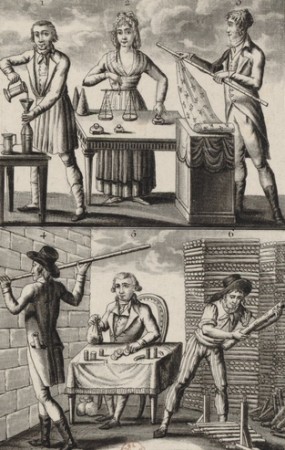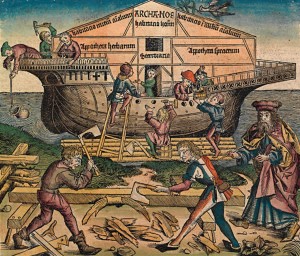Measuring Your Fantasy World
A writer has many challenges when creating a consistent, self-sustaining fantasy world for a story. Some are easy to anticipate, but others sneak up on you. After months of preparation, mapping, outlining and imagining, many a Fantasy writer has leaped into the first draft intoxicated by the joy of the world she has created, only to be brought up short by something apparently minor which results in some ceiling gazing and mumbling things like, ‘I really hadn’t thought of that.’
when creating a consistent, self-sustaining fantasy world for a story. Some are easy to anticipate, but others sneak up on you. After months of preparation, mapping, outlining and imagining, many a Fantasy writer has leaped into the first draft intoxicated by the joy of the world she has created, only to be brought up short by something apparently minor which results in some ceiling gazing and mumbling things like, ‘I really hadn’t thought of that.’
One of these insidious little aspects of world-building often overlooked is the business of measurement – distances, lengths, weights, volumes and so on. Once you start writing your epic, you’ll be surprised to find how often we need to refer to such things. How far away is the enemy? How can you give some indication that your hero is lifting something really heavy? In your fully imaginary world, how do the residents measure their surroundings? And when they do, how do they refer to them?
You can try using comparisons – ‘She was as tall as a house and she could throw a stone twice as far as three big houses lined up one after another’ – but these quickly get tedious, and reader will soon feel like you’re avoiding something. If your fantasy world is going to be convincing (and that should be a fundamental aim) then your inhabitants won’t go around their everyday lives looking to compare things to elephants. Or wagons. Or dinner plates.
One can simply ignore this issue and have your plucky goatherd tell the barbarian warrior that the castle of his lord is ‘about six or seven kilometres down the road’ or note that your wise sorceress adds ‘fourteen milligrams of eye of newt’ to her potion. Some writers do just that, but I have trouble with this approach. I’m a supporter of the metric system, but when it always strikes me as too ‘this world’ and it tends to jerk me out of the narrative. It sounds too modern and scientific for a quasi-mediaeval, low tech Fantasy world. And that’s even though I know that the metric system is a good two hundred years old.
Another approach is to use an older system, one more rooted in tradition – the Imperial system of weights and measures. Having your knights talk in pounds and ounces, while your peasants measure their height in feet and inches has an in-built consistency and fits neatly. It all sounds wonderfully old-fashioned and authentic – to some of us. The trouble is that the Imperial system isn’t as out-dated and outmoded as we might think. The USA uses it today and so, to USA based readers, the Imperial system might not have the cosy ring of antiquity that sets a narrative in a land far-off and long ago.
Some writers advocate going to all the trouble of inventing new units of measurement, terms that sound exotic and other worldly. I’d advise against this. Partly because it’s a lot of work, and partly because it can be utterly baffling for the reader. It can lead to such things as ‘Krognor was a good six m’mmbeths tall and weighed 12 systlas while Jeezra was as well built as a forty-one garleth barrel.’
Even worse, we get convoluted efforts to try to explain these units. ‘The farm was four hagronds away, which was a day’s walk for a strong warrior or two day’s walk for a weakling, or a quarter of a day for a mail carrier on a horse.’
It’s a pity that this approach is fraught with difficulty, for the judicious dropping in of created words is a useful way of reminding a reader that they aren’t in the ordinary world any more – they’re in a Fantasy world where normal rules may not necessarily apply. Exotica can contribute to the background texture that is part of the joy of reading Fantasy.
I do have a suggestion, a way that combines the best of the approaches above and avoids most of their disadvantages: use obsolete, traditional measurements. These have the beauty of being somewhat familiar but are obviously the creation of a long-ago time. When a reader comes across them they are immediately taken out of the here and now. And they are often based on the physical world and so are easy to relate to.
Here’s a bunch of obsolete and outmoded units of measurement that might be useful. Some of them are splendidly evocative of other times. Drop them in appropriately and your readers will be transported, in a good way.
Distance and length
League – about three miles (nearly 5 kilometres).
Chain – about 20 metres.
Furlong – about 200 metres.
Rod – about 5 metres.
Fathom – about 1.8 metres.
Ell – about 1.1 metres.
Cubit – about half a metre (the measurement from fingertips to elbow).
Armspan – a bit less than two metres.
Hand – about 10 centimetres
Barleycorn – about 8 millimetres
Mass
Hundredweight – about 50 kilograms.
Stone – about 6 kilograms
Dram – about 2 milligrams
Pennyweight – about 1.5 grams.
Scruple – about 1.2 grams.
Time
Season – a quarter of a year (four winters had gone by …).
Volume
Tun – about 900 litres.
Perch (for masonry) – about 700 litres.
Hogshead – about 300 litres.
Barrel – about 160 litres.
Bushel (for dry goods) – about 35 litres.
Peck (for dry goods) – about 9 litres.
Dram – about 3 millilitres.
Area
Rood – about 1000 square metres.